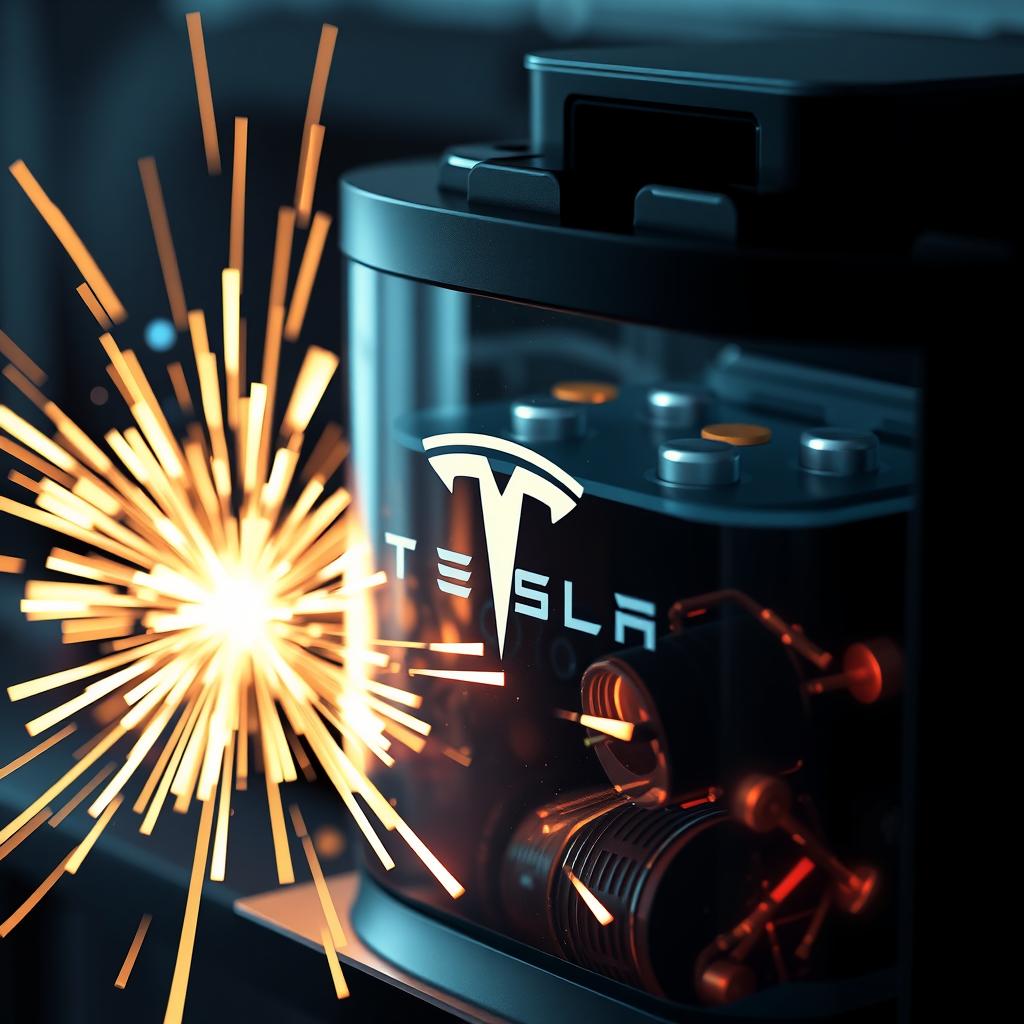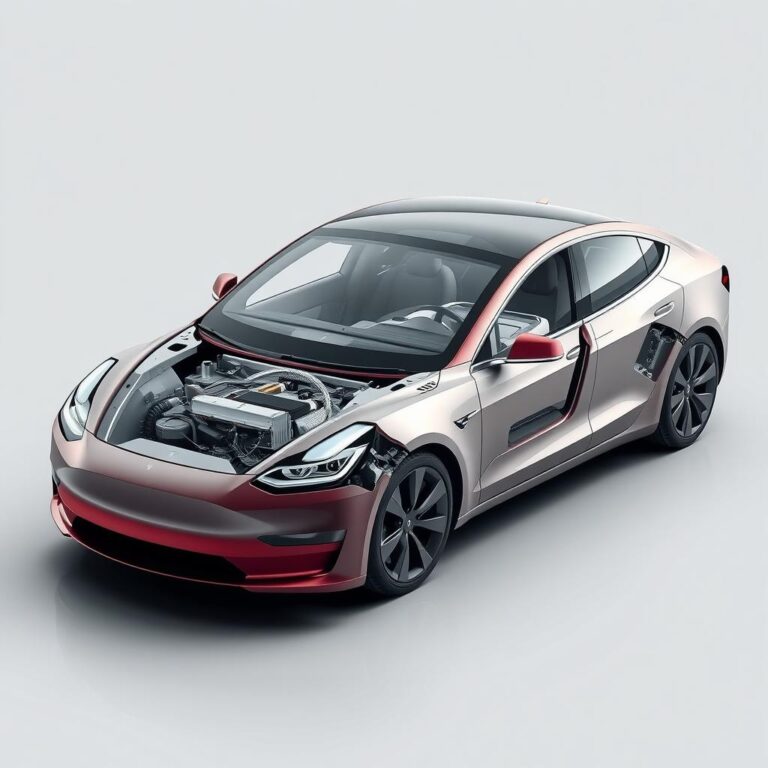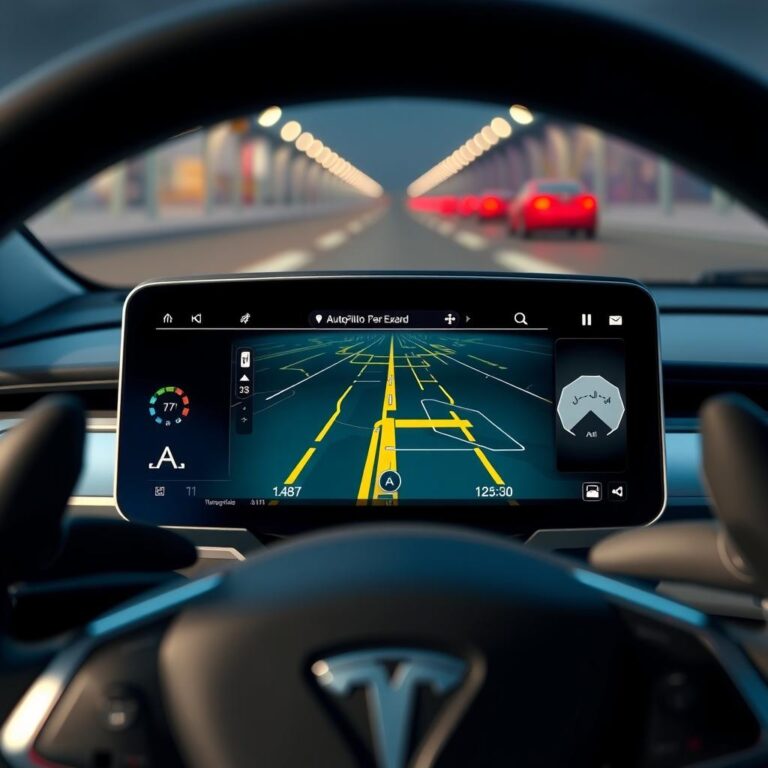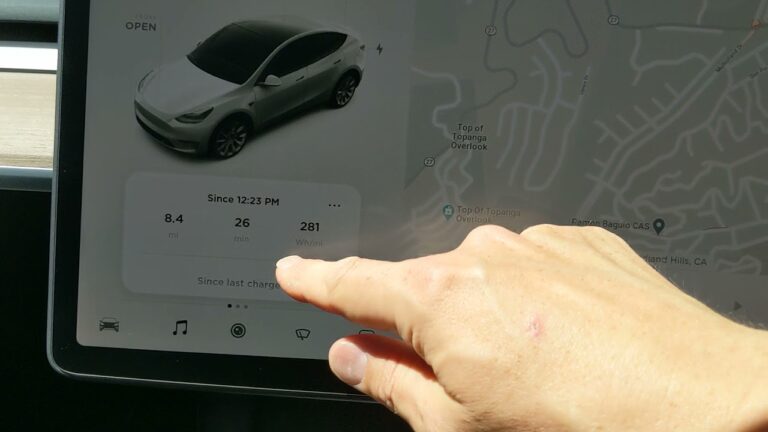Are Tesla Cars Dangerous?
Are Tesla cars dangerous? This is a question that has gained attention over the years as electric vehicles, particularly Teslas, become more popular. Tesla is widely recognized for its innovative technology, sleek designs, and cutting-edge features. However, with these advancements come concerns, especially when it comes to safety. While Tesla cars are known for their high safety ratings, there have been some incidents involving fires, crashes, and Autopilot malfunctions. So, are Tesla cars really dangerous, or are these isolated incidents that shouldn’t overshadow the overall safety record? Let’s dive into the facts.
Understanding Tesla’s Safety Features
Before diving into the potential dangers, it’s important to understand the safety features that Tesla cars offer. Tesla vehicles are equipped with some of the most advanced safety technologies on the market, designed to protect passengers in the event of an accident. Some of the key features include:
- Advanced Driver Assistance Systems (ADAS): Tesla’s Autopilot is one of the most notable features. Autopilot is designed to assist drivers with steering, braking, and acceleration. However, it’s important to note that Tesla recommends drivers remain alert and ready to take control at all times, as it is not a fully autonomous system.
- Collision Avoidance: Tesla cars are equipped with sensors and cameras that help the vehicle detect potential obstacles and prevent collisions. Features like automatic emergency braking and forward collision warning can help reduce the risk of accidents.
- Crash Safety: Tesla vehicles have performed exceptionally well in crash tests. The Model S, for example, has received high marks for its crashworthiness, earning top ratings from agencies like the National Highway Traffic Safety Administration (NHTSA). The vehicle’s low center of gravity, due to the battery placement, helps reduce the risk of rollovers.
- Side-Impact Protection: The design of Tesla cars includes side-impact protection beams and crumple zones that help absorb and dissipate energy in the event of a side collision, further enhancing passenger safety.
With these advanced safety features, many Tesla owners report feeling confident in the safety of their vehicles. However, as with any new technology, there are concerns and questions that arise.
What Are the Potential Dangers of Tesla Cars?
Despite the impressive safety features, there have been incidents involving Tesla cars that raise questions about their overall safety. Let’s take a look at some of the concerns that have been raised:
1. Autopilot and Self-Driving Technology
One of the most significant concerns about Tesla’s safety is the use of its Autopilot system. While the system is designed to assist drivers with steering, acceleration, and braking, it is not fully autonomous. There have been several high-profile accidents involving Teslas on Autopilot, where the system failed to respond appropriately to traffic conditions, leading to crashes. In some cases, drivers were not paying attention, assuming that Autopilot could drive the car without human supervision.
It’s important to note that Tesla has consistently warned its drivers that Autopilot is not a substitute for active driving. The system requires the driver to remain alert and ready to take control at any time. However, some critics argue that the name “Autopilot” is misleading and can lead to over-reliance on the system, which can be dangerous.
2. Battery Fires
Another concern with Tesla cars is the potential for battery fires. Like all electric vehicles, Teslas rely on lithium-ion batteries, which, in rare cases, can overheat and catch fire. Tesla has faced several incidents where its vehicles caught fire after collisions or other malfunctions in the battery system.
While Tesla has made significant improvements in battery safety, including fire-resistant materials and active cooling systems, battery fires are still a risk in any electric vehicle. However, it’s worth noting that Tesla cars are statistically less likely to catch on fire than traditional gasoline-powered cars, as EVs are less prone to fuel-related fires.
3. Collision Risks in Certain Situations
Although Tesla’s advanced driver assistance systems can prevent many collisions, they are not foolproof. There have been incidents where Tesla vehicles were involved in accidents due to the limitations of the vehicle’s sensors or Autopilot’s inability to detect certain obstacles. For example, some drivers have reported that their Teslas failed to recognize stationary vehicles or objects in certain road conditions, leading to rear-end collisions.
Tesla has made improvements to its Autopilot system and collision detection software over time, but there are still situations where the system may not perform as expected. As such, it’s essential for drivers to remain attentive when using Autopilot and be prepared to intervene if necessary.
4. Charging and Electrical Hazards
While Tesla’s charging infrastructure is generally considered safe, there have been reports of charging-related issues, such as overheating or malfunctioning charging equipment. In rare cases, charging cables or connectors have been reported to catch fire due to faulty equipment or improper use. Tesla has addressed these concerns by improving its charging stations and encouraging customers to use certified charging equipment.
It’s important to follow Tesla’s charging recommendations to minimize the risk of electrical hazards. Ensuring that your charging equipment is up to date and in good condition can help reduce the risk of fires or electrical malfunctions.
How Does Tesla Address These Safety Concerns?
In response to these concerns, Tesla has made several efforts to improve the safety of its vehicles and mitigate risks:
- Continuous Software Updates: One of Tesla’s key advantages is its ability to push over-the-air software updates to its vehicles. This means that safety features and driver assistance systems can be improved remotely, without the need for a visit to a service center. Tesla regularly updates its Autopilot system and collision avoidance technology to enhance performance and safety.
- Enhanced Safety Features: Tesla has also introduced new safety features, such as automatic emergency braking, enhanced crash detection, and improvements to its battery management system to reduce the risk of overheating or fires.
- Collaboration with Safety Agencies: Tesla works closely with safety organizations, such as the National Highway Traffic Safety Administration (NHTSA), to improve the safety of its vehicles. Tesla also shares data from its fleet of cars to help improve the understanding of vehicle safety in real-world conditions.
Conclusion: Are Tesla Cars Dangerous?
So, are Tesla cars dangerous? The answer is nuanced. While there have been some high-profile incidents involving Tesla vehicles, particularly related to Autopilot and battery fires, the overall safety record of Tesla cars is impressive. Tesla vehicles consistently earn high safety ratings, with strong performance in crash tests and advanced safety features that help prevent accidents.
Like any vehicle, Tesla cars come with inherent risks, especially when it comes to emerging technologies like self-driving and electric powertrains. However, the risk of accidents or fires is not higher than that of traditional gas-powered cars, and Tesla is actively working to address these concerns through technological advancements, safety features, and software updates.
Ultimately, Tesla cars are not inherently dangerous, but like any car, they require responsible use and attention to safety features. By understanding the capabilities and limitations of Tesla’s technology, drivers can reduce risks and enjoy the many benefits of owning one of the most innovative vehicles on the market.

Comparing Tesla’s Safety to Other Car Brands
When evaluating whether Tesla cars are dangerous, it’s helpful to compare their safety to that of other vehicles on the road. Traditional gasoline-powered cars and other electric vehicles have their own safety concerns, and it’s essential to look at the broader picture. Tesla’s cars often outperform many conventional vehicles in crash tests, and they have been recognized for their excellent safety ratings.
1. Safety Ratings and Crash Tests
Tesla vehicles consistently receive top marks in safety tests. For example, the Tesla Model S, Model 3, and Model X have all received high ratings from the National Highway Traffic Safety Administration (NHTSA) and the Insurance Institute for Highway Safety (IIHS). Tesla vehicles perform exceptionally well in crash tests due to their innovative design, such as the low center of gravity provided by the battery pack. This helps reduce the risk of rollovers and enhances overall crash safety.
While other car manufacturers have made significant strides in safety, Tesla has often been praised for integrating cutting-edge technology with crash protection. Its use of advanced materials and structural reinforcement in areas like the battery pack also adds to the vehicle’s ability to protect occupants during accidents.
2. Autopilot vs. Traditional Driver Assistance Systems
One of the key areas where Tesla stands out is its Autopilot and Full Self-Driving (FSD) systems. While these systems are designed to enhance safety by reducing human error, they are not perfect. Some critics argue that these systems may give drivers a false sense of security, leading to complacency on the road.
However, when compared to other brands, Tesla’s Autopilot has often been a step ahead. Many traditional car manufacturers have driver assistance systems that offer similar functions, such as lane keeping and adaptive cruise control, but they generally do not have the same level of functionality as Tesla’s Autopilot. Despite this, the question remains whether the public is fully ready for the level of automation Tesla offers.
3. Fire Risk: Electric Cars vs. Gasoline Cars
Fires in vehicles are not exclusive to electric vehicles. Gasoline-powered cars, especially older models, are just as susceptible to fires, often due to fuel system malfunctions, engine overheating, or collisions. In fact, according to a report by the National Fire Protection Association, gasoline-powered vehicles are more likely to catch on fire than electric vehicles.
Tesla’s lithium-ion batteries, while occasionally involved in fires, are equipped with numerous safety mechanisms to minimize the risk. The design of the battery system includes fire-resistant materials and a cooling system to manage temperatures. Tesla has also worked with emergency responders to ensure that they are prepared for incidents involving electric vehicles, which can present unique challenges compared to gasoline car fires.
Common Misconceptions About Tesla’s Safety
Despite the fact that Tesla cars are among the safest on the road, there are several misconceptions about the dangers they pose. Let’s clear up some of the most common myths:
1. Tesla Cars Are Prone to Exploding in Crashes
A common myth about electric vehicles is that they are prone to exploding or catching fire during a crash. While it is true that a battery in any EV can catch fire in certain extreme circumstances, the odds of an explosion or fire are much lower compared to traditional gasoline-powered vehicles. In fact, Tesla vehicles have proven to be safer than many gas-powered cars in crash tests, with fewer incidents of fires and explosions.
2. Autopilot is Fully Autonomous
Another misconception is that Tesla’s Autopilot system is fully autonomous, meaning the car can drive itself without any human intervention. This is simply not true. Tesla’s Autopilot is an advanced driver assistance system, but it still requires active supervision from the driver. Tesla encourages drivers to keep their hands on the wheel and stay alert while using Autopilot. The misconception that Autopilot is fully autonomous has led to dangerous incidents where drivers over-relied on the system and did not intervene when necessary.
3. Electric Cars Are Just as Dangerous as Gas-Powered Cars in a Collision
Many people assume that electric cars are just as dangerous as traditional vehicles in crashes, but this is not necessarily the case. Tesla cars are engineered with several safety features that help reduce the risk of injury in a collision. The low center of gravity due to the battery placement helps prevent rollovers, and the vehicle’s frame is designed to absorb and distribute impact forces in the event of a crash. Additionally, the lack of a traditional engine compartment allows for more crumple zones, which help protect occupants during a frontal collision.
What Tesla is Doing to Improve Safety
In response to safety concerns, Tesla is continually working to improve its vehicles. Here are some of the key initiatives the company has taken to make its cars even safer:
- Software Updates: Tesla regularly provides over-the-air software updates that enhance vehicle safety. These updates can improve everything from Autopilot performance to collision detection systems, ensuring that Tesla cars are always equipped with the latest safety technologies.
- Battery Safety Improvements: Tesla has invested heavily in improving the safety of its batteries. The company uses fire-resistant materials in the battery packs and has implemented advanced cooling systems to prevent overheating. These upgrades help reduce the likelihood of fires in the event of a crash or battery malfunction.
- Enhanced Crash Protection: Tesla vehicles are equipped with reinforced structures designed to protect passengers during collisions. The company uses high-strength steel and other materials to improve the crashworthiness of its vehicles, particularly in side-impact crashes and rear-end collisions.
Conclusion: Are Tesla Cars Dangerous?
So, are Tesla cars dangerous? The answer is no, Tesla cars are not inherently dangerous. In fact, Tesla vehicles consistently receive top marks for safety and outperform many other vehicles in crash tests. While there have been incidents related to Autopilot malfunctions, battery fires, and other safety concerns, these issues are rare and do not outweigh the overall safety benefits of owning a Tesla.
Tesla cars are equipped with some of the most advanced safety features available today, including a strong structure, active safety technologies, and a robust battery management system. While there are risks associated with any vehicle, Tesla’s commitment to continuous improvement, software updates, and advanced technology helps ensure that their cars remain some of the safest on the road.
As with any vehicle, it’s essential to understand the capabilities and limitations of Tesla’s technology. By staying informed about the safety features and following Tesla’s guidelines for using Autopilot and other systems, drivers can enjoy the many benefits of driving a Tesla without unnecessarily increasing the risk of accidents or safety issues.




